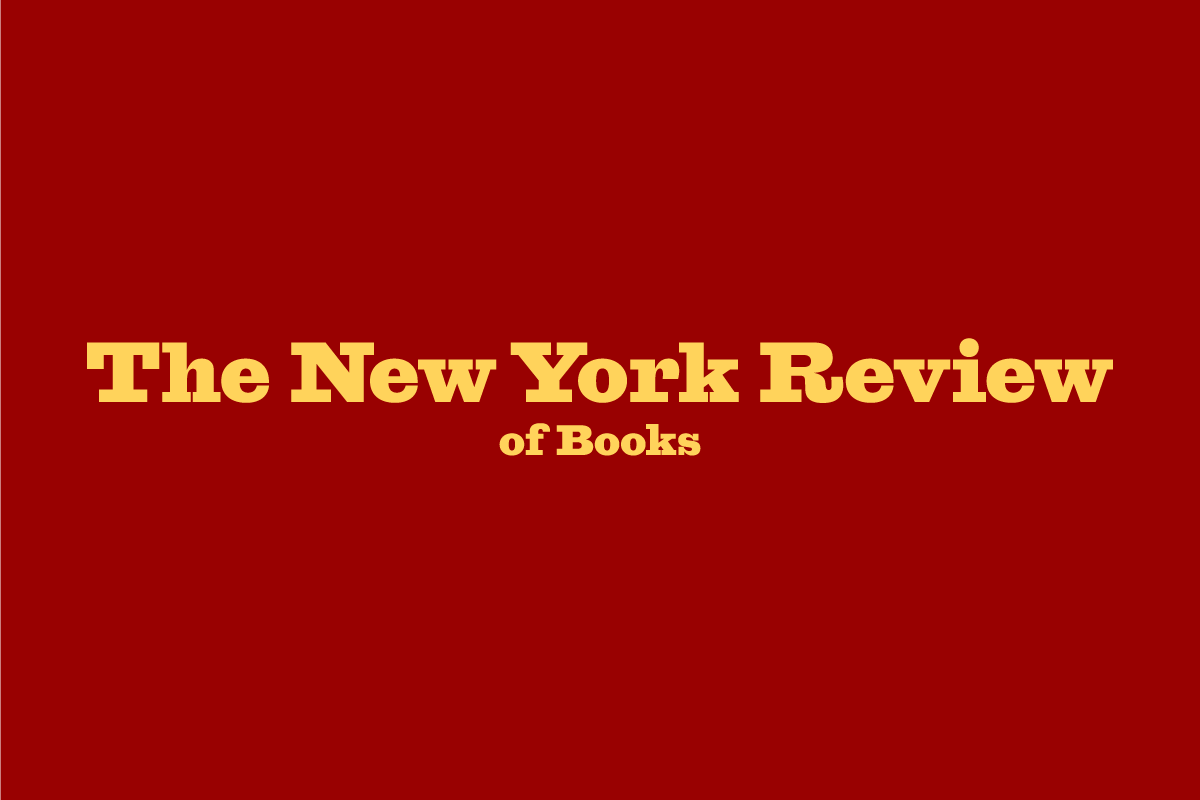Historians usually try to maintain two vantage points at the same time. They attempt to perceive and recreate events as contemporaries experienced them. They also utilize the advantages of hindsight and access to a wide array of documentation to try to explain events in a way that contemporaries never could. Sometimes historians also draw upon their knowledge of the past to enhance the understanding of our current situation. The authors of the three books under review differ in the degree to which recreating past perceptions takes precedence over interpretation in hindsight, and they also differ in how explicitly and frequently they reference similarities between past and present.
In Takeover, Timothy Ryback is refreshingly candid in stating that his “main objective was to recount the last six months of Hitler’s ascent to power as it was reported and perceived at the time.” His main source was “a representative selection of newspapers, from the far right to the radical left, with the foreign press providing an outside perspective.” Additionally, he relied heavily on diaries, correspondence, official records, and speeches but “drew on scholarly works sparingly.” Takeover therefore does not provide a broader perspective or in-depth historical background for the events of these six months, nor does it mention, much less debate, the interpretations of other historians. What Ryback does is admirably capture the shifting moods, political stances, and risk-taking as well as the speculations, uncertainties, and confusion of the political figures who did not know how the story he narrates would end.
The tragic weight of Hitler’s dictatorship on history has lent a sense of inevitability to his coming to power. How could the origins of a regime that was so catastrophic in its consequences have been so contingent? How could the casual decisions of a few feckless men have had such terrible results? But Ryback shows how Hitler’s stratagems during this six-month period consistently failed until the very last days of January 1933, and how for contemporaries his ascent was anything but inevitable. Ryback also draws excellent portraits of people who were major participants in the events of those months but subsequently were eclipsed (and in several cases murdered) by the Third Reich. All too often they were small men in a situation that required more; grave times do not always call forth great men to meet the occasion.
Ryback organizes Takeover around three periods of intense negotiations—August 1932, November 1932, and January 1933—concerning if and under what conditions Hitler and his Nazi Party would be invited to join the government. But the first important set of negotiations (only briefly mentioned by Ryback) between Hitler and members of the inner circle of Germany’s governing elite that opened the door for the Nazis and all that followed had already occurred in the spring of 1932. President Paul von Hindenburg’s closest confidant, General Kurt von Schleicher, had two goals: ousting Germany’s unpopular, presidentially appointed chancellor, Heinrich Brüning, and harnessing Hitler’s popularity to carry out an authoritarian revision of the democratic Weimar Constitution that Germany’s upper-class conservative nationalists did not have sufficient popular support to achieve on their own. The devious Schleicher could not operate openly, since he had initially recommended Brüning, and Hindenburg had nothing but disdain for the Nazis. That spring Hitler had run against Hindenburg in the presidential election, forcing him into a humiliating runoff to secure his second term. (Ryback notes without further comment that Hitler challenged the election results in court and when the case was dismissed declared victory regardless.)
Schleicher’s initial deal with Hitler provided temporary Nazi support for his hand-picked successor to Brüning, the feckless Rhineland noble Franz von Papen, thus compelling Hindenburg to let Brüning go. In return, Schleicher promised Hitler that he would lift a ban on the Nazi brown-shirted storm troopers (the SA) and dissolve the Reichstag. This meant calling elections two years early and offering Hitler the chance to demonstrate the Nazi Party’s continued phenomenal growth since its spectacular electoral breakthrough in September 1930, when it increased its seats in the Reichstag from 12 to 107.
In the July 31, 1932, Reichstag elections, the Nazi Party more than doubled its popular vote (from 18.3 to 37.4 percent) and increased its number of seats from 107 to 230, for the first time easily surpassing the Social Democrats as the largest party in the Reichstag. Hitler assumed that as leader of the largest delegation he was entitled to an invitation to form the next government, an assumption that Schleicher encouraged in their initial postelection meeting. For Hitler the options were either a coalition under his chancellorship or a presidential chancellorship appointed by Hindenburg and ruling with the full emergency powers constitutionally invested in the president. A third option, an outright seizure of power, was favored by the SA, which during the campaign had engaged in widespread street violence against its opponents that continued even after the election. For Hitler, however, violence against the state—unlike attacks on Communist and Socialist neighborhood strongholds—had been ruled out since his 1923 Beer Hall Putsch in Munich ended ignominiously in a short burst of gunfire by police and soldiers loyal to the government. Henceforth Hitler had pursued the tactics of legality for undemocratic ends. As Goebbels wrote in 1928, “The big joke on democracy is that it gives its mortal enemies the tools to its own destruction.” And now the moment of opportunity, the reward for years of organizing and electioneering, seemed at hand. But since the Nazis had failed to obtain an absolute majority, the fate of Hitler and Germany rested in Hindenburg’s hands.
Hindenburg was not pleased that Schleicher had met with Hitler, and he was advised by Papen that the July election represented the Nazis’ peak, from which they could only lose momentum and begin to decline if they failed to take power. When Hitler finally met with Hindenburg on August 13, the president did not invite him to form a coalition government but rather inquired whether he would agree to serve in the cabinet as vice-chancellor under Papen. Staggered, Hitler demanded not only the chancellorship but one-party rule without coalition partners, which Hindenburg rejected. The acrimonious meeting was over in less than twenty minutes.
Ironically, Ryback notes, while Hindenburg had been elected as the right-wing candidate in 1925, seven years later (much to his chagrin) he had been reelected as the center-left alternative to Hitler and had now become Germany’s “final bastion in the defense of democracy.” Hanging precariously by such a frayed thread, how long could Weimar democracy endure?
The Nazis fell short of a majority in the July 1932 elections, but since the Stalin-controlled German Communist Party won 14.3 percent, a majority of Germans had voted for one version of extreme dictatorship or another. The middle-class democratic parties had been swallowed up by Hitler, and the aging Social Democrats—the staunchest supporters of Weimar democracy from the beginning—had hemorrhaged working-class voters (especially younger, unskilled, and unemployed workers) to the Communists. Together these two parties—bitter enemies—now attempted to make Germany ungovernable. The new Reichstag had to be dissolved immediately, and yet another election was scheduled for November 6.
While making common cause with the Communists against Weimar democracy, Hitler was simultaneously facing several fissures within his own party. The SA was impatient and frustrated by the politics of legality and wanted direct action with some tangible reward for its years of sacrifice. Providing countervailing pressure was Gregor Strasser—the chief party organizer and champion of the “left-wing” Nazis who took the “socialism” of National Socialism more seriously than most. He now emerged as the voice of moderation, urging Hitler to take advantage of his electoral success, compromise on his demand for full power, and participate in a coalition government. But Hitler continued to chart his own course, rejecting both a “March on Berlin” and a reduction of his demands. He knew that “without my party no one can rule Germany today.” Thus he refused to “sell out the movement for a few ministerial seats” and bet everything on the new elections.
The result for the Nazis was a debacle. Since 1929 they had gone from one success to another in local, state, and federal elections, creating an impression of inexorable momentum toward ultimate victory. On November 6, 1932, the bubble burst. The Nazis lost two million votes, dropping to 33.1 percent of the total. The big winners were the Communists (up nearly 700,000 votes, to 16.9 percent) and Alfred Hugenberg’s right-wing Nationalists (up 800,000 votes, from 5.9 to 8.8 percent). Ryback concludes: “By mid-November 1932, Hitler’s movement was essentially bankrupt, not only financially but also politically.” His all-or-nothing gamble had failed, and the endless campaigning of 1932 had exhausted the party’s finances. As it was now both deeply in debt and had experienced electoral defeat, new fundraising proved futile, and demoralization within the party intensified.
Following the elections, a new and frenetic round of negotiations occurred. No party leader would talk with, much less support, Papen, and the caretaker chancellor (with a push from Schleicher) submitted his resignation. Hindenburg then met with Hitler twice and expressed his desire to form a coalition cabinet of Nazis, Nationalists, and members of the Catholic Center Party—a cabinet that would restore rule by parliamentary majority for the first time since 1930. Hitler was interested only in becoming chancellor of a presidential cabinet ruling by decree with Hindenburg’s emergency powers (as had been the case for the Brüning and Papen governments). As in August 1932, Hitler’s maximalist demands were rejected. Soon thereafter, the Nazis experienced another alarming decline in voter support in state elections in Thuringia, which to Strasser’s dismay left Hitler unmoved.
Schleicher now came to the fore. Having ousted Papen, he obtained Hindenburg’s nomination as chancellor on the promise of assembling a cabinet with majority support in the Reichstag. One of his calculations was that if he offered the increasingly distraught Strasser the position of vice-chancellor, the unhappy Nazi would bring a sizable faction of Nazi delegates with him. This hope proved delusional. When Hitler made clear to Strasser his adamant opposition to any cooperation with Schleicher, Strasser immediately caved, resigned his party positions, and took off on an Italian vacation. Posing now as a “social general” pursuing unconventional populist policies, Schleicher also approached Catholic and labor union leaders, but without success. Understandably, no one trusted the devious general anymore, and his isolation opened the door for the pouting Papen to take revenge on the man who had first installed and then deposed and replaced him.
In late December the press was filled with reports of fights and defections within the bankrupt and rapidly declining Nazi Party, which Hitler denounced as “a witch hunt of lies.” Ironically it was the Nazis’ imminent decline more than their earlier inexorable rise that paved the way for a reconciliation among Hitler, Papen, Hugenberg, and Hindenburg. Fearful of the resurgent left, a pro-Nazi banker, Kurt Baron von Schröder, arranged for a secret meeting on January 4 between Hitler and Papen at his Cologne villa. A second secret meeting was held at the Dahlem villa of the Nazi businessman Joachim von Ribbentrop on January 10. On both occasions Papen proposed a joint government of Nationalists and Nazis, initially with Papen as chancellor and Hitler as vice-chancellor. Once Hitler’s good behavior had allayed Hindenburg’s apprehensions, this arrangement would eventually pave the way for him to assume the chancellorship. No agreement was reached, but importantly the Nazis found financial relief when Schröder raised the limit on their borrowing.
Meanwhile parallel negotiations among Schleicher, Hugenberg, and Strasser (who had returned from Italy) explored the possibility of a coalition without Papen. Bargaining positions were shaped by the outcome of yet another election in the state of Lippe in mid-January. The Nazis finally reversed their losing streak, regaining half the votes they had lost in November. Hugenberg’s Nationalists, big winners in November, lost badly. When negotiations resumed after the Lippe elections, Hitler still insisted on the chancellorship but for the first time entertained the idea of a coalition cabinet with many traditional conservatives holding important ministerial positions, as opposed to his previous demands for full powers in a presidential cabinet. Also, two of Hindenburg’s closest advisers—his son, Oskar, and his chief of staff, Otto Meissner—were gravitating toward a Hitler chancellorship.
The deadline that loomed over negotiations was January 31, when the Reichstag elected in November had to meet. Either Hindenburg had to find a cabinet that would not suffer an immediate vote of no confidence, leading to yet another dissolution and new elections, or he would have to suspend the constitution (which Schleicher had warned would lead to a two-front civil war against both Nazis and Communists while also inviting foreign intervention, a combination of threats against which the army could not prevail). In the last days of January, negotiations climaxed. Schleicher, unable to assemble a cabinet with any popular support, asked Hindenburg to declare a state of emergency and dissolve the Reichstag but not hold new elections. Citing Schleicher’s own earlier advice, Hindenburg dismissed his chancellor and asked Papen to propose a new government.
Papen conceded the chancellorship to Hitler but limited further Nazi participation to just two additional cabinet seats. He placed himself in charge of Prussia, which governed nearly three fifths of Germany’s population. And the reluctant Hugenberg was lured into the cabinet as economic “dictator.” Most cabinet positions were to be held by conservative holdovers from the previous Papen cabinet, though General Werner von Blomberg, who opted to support a Hitler-led cabinet, replaced Schleicher as minister of defense. Papen and Hugenberg congratulated themselves that they had boxed Hitler in; they would press him so tightly into a corner “that he’ll squeak.” The proposed cabinet assembled in Hindenburg’s office and was sworn in on the morning of January 30. The deal that Schleicher had wanted to make since the spring of 1932 was finally consummated, but he was left on the outside.
Ryback’s narrative and his portraits of major figures are riveting, but he attempts little in the way of analysis. He concludes that the Weimar Republic “died twice. It was murdered and it committed suicide.” That Hitler was the murderer is clear, but Rybeck ends rather inconclusively that the “act of state suicide is more complicated.” Fortunately the curious reader can consult two other important books that were published several years earlier.
Peter Fritzsche’s Hitler’s First Hundred Days starts with Hitler’s appointment as chancellor on January 30. Fritzsche notes that there “was no such thing as majority opinion” in fragmented Germany and that the “political system had checkmated itself.” Thus the fate of the country lay in the hands of a small clique of right-wingers around Hindenburg, who were determined not only to exclude the left (the revolutionary Communists as well as the ardently prodemocratic Social Democrats) but also to “destroy the republic and establish a dictatorship.” He continues, “In order to smash the Weimar Republic the men in the room needed the Nazis, and to lever themselves into power, the Nazis needed the men in the room.” Hitler’s realization of his indispensability to the conservatives allowed him to hold out for six months until he got the minimum deal he needed: the chancellorship, an inept cabinet of conservative partners who totally underestimated him, a pliant president who would sanction the use of whatever emergency presidential powers he requested, and a surge of popular enthusiasm that his coming to power would unleash among both his followers and many others. These factors enabled Hitler to carry out a “legal revolution” and establish a popularly supported dictatorship within a mere one hundred days after his appointment as chancellor. The crucial question for Fritzsche is what combination of coercion and consent lay behind this achievement.
He opines that at the end of 1932, after “the Nazis suffered one reversal after another,” many Germans felt a “sense of relief” that “the worst was over” and that a “weaker” Nazi movement “would have to work within the system.” No surge in public opinion forced Hindenburg’s hand. Rather “the desire to establish authoritarian rule was so strong” among German conservative nationalists that they could not risk Hitler running his party into the ground and leaving them without popular support to contain the left.
Whatever the false calculations of Hitler’s partners, his appointment as Weimar’s twenty-third chancellor was felt to be “different” from previous transitions, according to Fritzsche, and the Nazis benefited enormously from the yearning of millions of Germans for “a new start” after years of crisis and deadlock. The transformation of the German mood, including the willingness to accept and rationalize immense violence, was underway, and virtually no one “thought about returning to Weimar.”
In the first days of February, Hitler obtained Hindenburg’s acquiescence to new elections on March 5 as well as the suspension of constitutional guarantees of free speech, press, and assembly. The Nazis had no intention of competing in a free and fair election. On February 22, some 50,000 men from the SA, SS, and Stahlhelm were deputized as auxiliary police in the state of Prussia. In a perfect example of the perniciousness of the “legal revolution,” yesterday’s street-brawling hooligans had become today’s law enforcers. And following the Reichstag fire of February 27, further emergency decrees granted the government the power of “protective custody,” allowing it to arrest and incarcerate anyone without due process of law, and the power to depose all state governments not yet in Nazi hands.
Despite this incredibly rapid imposition of unchecked dictatorial rule and the crippling of their opponents, in the palpably unfree elections of March 5, the Nazis won only 44 percent of the popular vote. Their coalition partners garnered another 8 percent, giving the government a thin 52 percent majority. The challenge Fritzsche sets himself is to explain how the Nazi regime managed “to erode” so much of this silenced 48 percent within the next two months. If repression—always cast as counterterror against the Communist threat and necessary to preserve law and order—could neutralize opposition within five weeks, it nevertheless continued unabated thereafter. The new regime needed several more months to obtain willing identification with and consent from a significant majority of Germans.
Fritzsche makes the telling argument that violence not only silenced Nazi opponents but was also essential to building support. The ongoing violence, choreographed as public rituals of humiliation that portrayed Nazi opponents as weak and ridiculous, turned entertained spectators into accomplices by virtue of their “voyeuristic pleasure.” The “wave of denunciation” that swept over Germany broadened the ranks of complicity further. Fritzsche concludes that “violence preceded acclamation and proved to be one of its key ingredients. It became a regenerative force in the making of the national community.” Many flocked to the Nazis as opportunistic “March casualties,” but for many others the belief in national renewal and a restored Volksgemeinschaft, or people’s community (now understood as defined by racial exclusion rather than political, social, and religious inclusion), was sincere. Swept up in celebrations of renewal and unity, individuals “repositioned and reconfigured” themselves into “ideological congruence” with the Third Reich. Simultaneously, the “‘48 percent’ who had not voted for Hitler almost entirely disappeared from view” as they increasingly seemed “obsolescent” even to themselves.
Fritzsche asks how such a “sea change,” in which “more and more Germans” accepted the “necessity of compliance” as well as the Nazi standard of “normality,” was possible. Coercion “played an undeniable role,” he concedes, but ultimately he concludes that “the great achievement of the Third Reich was getting Germans to see themselves as the Nazis did: as an imperiled people who had created for themselves a new lease on collective life,” and that “to make Germany great was to narrate a great awakening.”
Alongside Ryback’s recreation of how the historical actors perceived German politics in the six months between August 1932 and January 1933 and Fritzsche’s capturing of the “sea change” in the mood of the German population in the first hundred days of the Nazi regime, Benjamin Carter Hett provides a more conventional but exceptionally succinct and insightful long-term background account in The Death of Democracy. Hett is also the most openly presentist of these three authors. He justifies writing yet another book on this topic in part because he is writing not in an era of democratic triumphalism but rather in one of rising illiberal, populist authoritarianism. He notes that “in many ways, our time more closely resembles the 1930s than it does the 1990s,” as the Nazis “were fundamentally a protest reaction against globalization.” The end of World War I represented “an overwhelming triumph of global liberal capitalism” in the form of an “Anglo-American order” based on the gold standard and “doctrines of financial austerity.” This had severe political ramifications, because “political logic pushed opponents of austerity to become opponents of liberal democracy as well.”
Hett also begins with two stories Germans told about their recent past that gained mythic status. First, that they entered World War I in August 1914 experiencing transcendent unity but that their defeat in November 1918 was the result of a “stab in the back” perpetrated by Jews, Marxists, and internationalists. The lost war, revolution, unjust peace settlement, economic chaos, and “huge social and technological change” were so intolerable that they led to a rejection of reality by many Germans. And they supported Hitler because he gave “voice to this flight from reality as could no other German politician of his time.” This “hostility to reality translated into contempt for politics” that in turn destroyed the “minimal common ground” that democracy needs to function.
Hett then turns to what he calls the Hitler paradox: “Adolf Hitler lied all the time. Yet he also said clearly what he was doing and what he planned to do.” As his finance minister, Count Lutz Schwerin von Krosigk, observed, “he was so thoroughly untruthful that he could no longer recognize the difference between lies and truth.” But his followers craved “authenticity,” and “facts didn’t matter at all.” For Hitler his message “had to be simple” and “emotional,” not intellectual. And while he was personally close to no one, he had “a remarkable intuition for the thoughts, hopes, fears, and needs of other people.” Among other traits of Hitler, Hett includes insecurity, intolerance of criticism, bombastic claims about his own achievements, and scorn for intellectuals and experts. Thus without ever mentioning Donald Trump and MAGA, Hett clearly intends to draw parallels between Hitler and the Nazis on the one hand and the current American situation on the other.
To explain the “checkmated” nature of German politics, mentioned by Fritzsche, that made democracy so dysfunctional, Hett notes the three broad “confessional” camps or social milieus that characterized German society: the working-class, socialist camp that politically was bitterly divided between the Social Democrats and Communists; the Catholic camp, represented by the Center Party and its Bavarian sister party; and the Protestant middle-class camp, initially represented by the German Nationalists (DNVP), the German Democrats (DDP), and the German People’s Party (DVP) but eventually captured by the Nazis. Each camp or social grouping remained relatively stable through the Weimar era, but within each group the balance between democrats and authoritarians was not stable. A second major division in German society was between rural and urban (symbolized above all by Berlin, with its avant-garde culture, modern sexual mores, and concentrations of Jews and industrial workers). The Nazis became the plurality party in Germany by winning overwhelming support among Protestant middle-class and rural voters, but it fell short of an absolute majority because working-class and Catholic voters proved more difficult to win over. The deep divisions of German society, magnified by the Weimar Constitution’s electoral system of proportional representation, were accurately reflected in a multiparty system devoid of a political culture of compromise and incapable of achieving broad consensus.
By the late 1920s, even before the stock market crash, numerous groups—Hindenburg and his close circle of advisers, big business, the army, the Nationalists—were increasingly turning their backs on Weimar democracy. In 1930 Hindenburg ceased trying to govern through a parliamentary majority (which would have required including the Social Democrats and adopting economic policies for creating jobs and enhancing consumer demand) and instead ruled through the emergency decree provision of the constitution, which allowed him to appoint a presidential cabinet. The presidential chancellor, Brüning, in turn pursued an economic policy of harsh austerity and deflation (cutting government jobs, salaries, and unemployment insurance) that severely worsened the depression in Germany.
Hett places greater emphasis on Brüning’s actions than many other historians. He argues that Brüning was neither the victim of conventional, pre-Keynesian economics that preached austerity as the virtuous solution to all crises, nor even the unwilling captive of the legacy of Germany’s hyperinflation in 1923, which foreclosed stimulative government spending as a policy option. Rather Brüning prioritized foreign policy and maximized the effects of the depression in Germany as a means to gain diplomatic leverage that would force the Allies to end reparations. His policies “metastasized” the depression in the short run with devastating consequences, while the eventual end of reparations came too late to save either himself or Weimar democracy.
Hett notes how dramatically the center of political gravity in Germany shifted between the presidential elections of 1925 and 1932: “The patterns of support in the 1925 election had been completely reversed…. The best statistical predictor of a vote for Hitler in 1932 was a vote for Hindenburg in 1925.” I think it should be noted that in addition to taking the bulk of the Protestant middle-class vote that previously went to the DDP, DVP, and DVNP, the Nazis were overwhelmingly successful in capturing first-time voters, especially youth, and were also disproportionately successful among women voters.
Like Ryback and Fritzsche, Hett places ultimate responsibility for Hitler’s ascent on German conservatives, who disdained democracy:
The crisis and the deadlock of 1932 and early 1933, to which Hitler appeared as the only solution, was manufactured by a political right wing that wanted to exclude more than half the population from political representation…. To this end, a succession of conservative politicians…courted the Nazis as the only way to retain power on terms congenial to them. Hitler’s regime was the result.
Confident that they had managed to both use Hitler and contain him, they were totally unprepared to withstand the whirlwind “legal revolution” (which in reality involved an enormous wave of government-sanctioned violence and terror) that created the Nazi dictatorship within a few short months.
Fritzsche examines the process by which many Germans were won over to National Socialism only after the seizure of power. Hett focuses on the mass of Germans who were already Nazis before January 1933. They formed a “large protest movement” that constituted a “cult of irrationality” engaged in a “revolution against reason.” This “rejection of rationality” and “contempt for truth and reason” was central to the rejection of the Enlightenment tradition, democracy, and the “liberal, capitalist West” by National Socialism as well as other interwar fascist movements. Hett concedes that such Germans could not have foreseen how their rejection of truth, reason, and rationality would lead to Babi Yar and Auschwitz, because those evils were as yet “unthinkable.” He ends with a presentist warning for the future: such an alibi will not hold today, since “we have their example before us.”




















 English (US) ·
English (US) ·